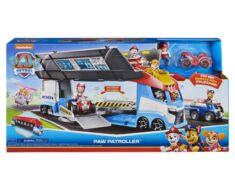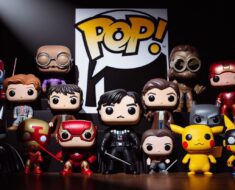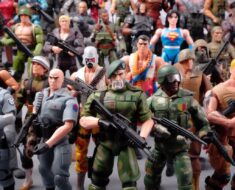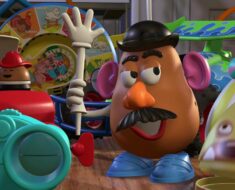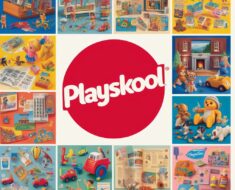The Origin Story
Play-Doh, the colorful modeling compound that has entertained generations of children, has a humble and surprising origin. It was not invented as a toy, but as a wallpaper cleaner in the 1930s by Noah McVicker, a soap manufacturer from Cincinnati, Ohio. At the time, coal was the main source of heating for many households, and it left soot stains on the walls. McVicker’s product was a pliable, putty-like substance made of water, salt, and flour that could remove the dirt without damaging the wallpaper.

McVicker’s nephew, Joe McVicker, joined the family business, Kutol Products, in the late 1940s, with the mission to save it from bankruptcy. The demand for wallpaper cleaner was declining, as people switched to natural gas heating and vinyl wallpaper, which were easier to clean. Joe McVicker had a lucky break when his sister-in-law, Kay Zufall, a nursery school teacher, discovered a new use for the product. She had read a newspaper article about making art projects with wallpaper cleaner, and decided to try it with her students. They loved it, and she suggested to Joe McVicker that he should market it as a child’s toy. She also came up with the name Play-Doh, while Joe and Noah wanted to call it Rainbow Modeling Compound.
The Toy Market Breakthrough
Joe McVicker took Play-Doh to an educational convention in 1956, where he met representatives from Woodward & Lothrop, a department store in Washington, D.C. They agreed to sell the product, and soon other stores followed, such as Macy’s and Marshall Field’s. Joe and Noah McVicker formed a new company, Rainbow Crafts, to make and sell Play-Doh, and also added more colors to the original white. In 1957, they hired a chemist, Dr. Tien Liu, who reduced the salt content of Play-Doh, allowing it to dry without losing its color. They also launched a successful advertising campaign, featuring commercials on popular children’s TV shows, such as Captain Kangaroo, Ding Dong School, and Romper Room. By 1958, Play-Doh’s sales reached nearly $3 million.

The Expansion and Decline
In the 1960s, Play-Doh continued to grow, expanding to international markets, such as Britain, France, and Italy. It also introduced new products, such as the Fun Factory, a device that extruded Play-Doh into various shapes, and Play-Doh Pete, a mascot that appeared on the packaging. In 1965, Rainbow Crafts obtained a patent for Play-Doh, and in 1967, it was acquired by General Mills, a food company that also owned Kenner, a toy manufacturer. In 1971, Kenner took over the production and marketing of Play-Doh, and in 1987, it was sold to Tonka, another toy company.
However, Play-Doh also faced some challenges and controversies during this period. In 1960, a lawsuit was filed by Kutol Products, claiming that Rainbow Crafts had violated their contract by selling Play-Doh to other distributors. The case was settled out of court, with Rainbow Crafts paying Kutol a royalty fee. In 1978, a consumer group sued Kenner, alleging that Play-Doh contained harmful substances, such as borax and asbestos. The suit was dismissed, as Kenner proved that Play-Doh was safe and non-toxic. In 1982, Play-Doh faced competition from a similar product, Fun Putty, made by a rival company, Coleco. Kenner sued Coleco for trademark infringement, but lost the case, as the court ruled that Play-Doh was a generic term.
The Revival and Innovation
In 1991, Tonka was acquired by Hasbro, a global play and entertainment company, which still owns Play-Doh today. Under Hasbro, Play-Doh has undergone a revival and innovation, launching new products, such as Play-Doh Plus, a softer and smoother compound, and Play-Doh Touch, a digital app that brings Play-Doh creations to life. Play-Doh has also collaborated with other brands, such as Disney, Marvel, Star Wars, and Peppa Pig, to create themed playsets and characters. In 2003, Play-Doh was inducted into the National Toy Hall of Fame, and in 2006, it celebrated its 50th anniversary with a special golden can.
Play-Doh is not only a toy, but also a cultural phenomenon, inspiring artists, musicians, comedians, and even scientists. Some examples of Play-Doh’s influence are:
- In 2004, artist Jason Mecier created a portrait of Conan O’Brien using 50 pounds of Play-Doh.
- In 2008, musician Jack Johnson released a song titled “The 3 R’s”, which featured the lyrics “Reduce, reuse, recycle…and close the loop, you can do it with play-doh”.
- In 2010, comedian Demetri Martin performed a stand-up routine with Play-Doh, making jokes about its smell, taste, and texture.
- In 2015, scientists from the University of St Andrews used Play-Doh to simulate volcanic eruptions, studying how magma interacts with water and ice.

The Future and Vision
Play-Doh is not resting on its laurels, but is constantly looking for new ways to engage and delight its fans. In 2022, it was announced that a new animated film adaptation is in development at Entertainment One and its parent company Hasbro, with Emily V. Gordon writing and Jon M. Chu producing and possibly directing. In 2022, it also partnered with Creative Kids, a toy manufacturer, to produce a variety of new Play-Doh compounds, such as modeling clay and air dry clay.
Play-Doh’s vision is to shape imaginations for generations of families, by offering unique and engaging experiences for both kids and parents. As its slogan says, Play-Doh is “fun to play with, not to eat”.

